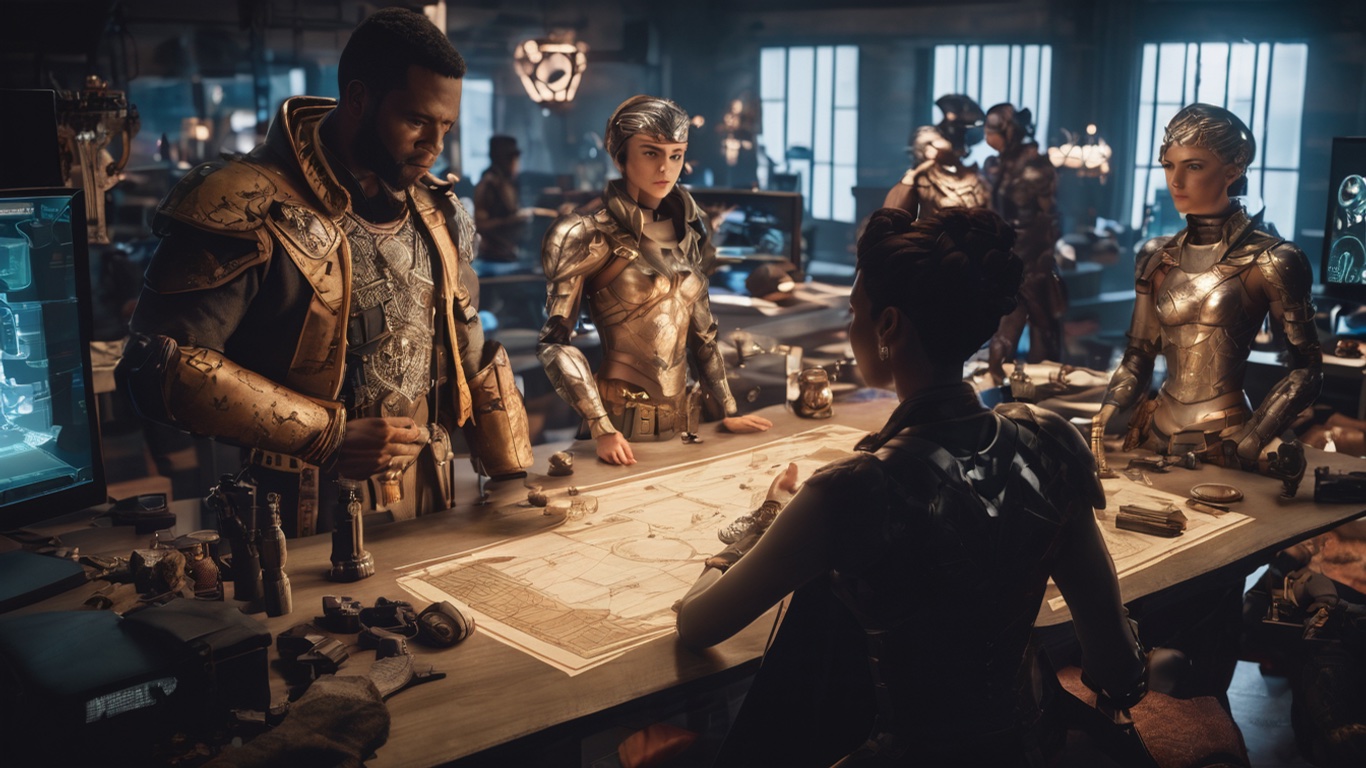
Are you an aspiring game developer with a brilliant game idea but no clue how to make it a reality? Enter the game development studio – your ultimate partner in turning your vision into a playable game. In this article, we’ll show you how a game development studio can bring your game idea to life, following industry best practices.
Collaborative Ideation
Bringing your game concept to a game development studio marks the beginning of a creative journey. You’ll sit down with a team of professionals who will work closely with you to flesh out your idea. They’ll listen to your vision, discuss possibilities, and offer insights to refine your concept into a solid game plan. This collaborative approach is a best practice in the industry, as highlighted by Gamasutra’s article on effective game development collaboration.
Concept Design
Once the studio team has a clear understanding of your game idea, they’ll start designing the concept. This includes creating initial sketches, storyboards, and rough outlines to visualize the game’s structure and gameplay. You’ll have the chance to review and give feedback on these designs to ensure they align with your vision. The iterative design process is a widely recognized best practice, emphasized in Game Developer Magazine’s guide to game design.
Development and Programming
After finalizing the concept, the game development studio’s team of programmers will begin building the game. They’ll use their coding expertise to create the game’s core mechanics, features, and functionalities. Throughout this process, you can stay in the loop and provide feedback to make adjustments as needed. Agile development methodologies, such as Scrum and Kanban, are often employed in this phase, ensuring flexibility and responsiveness to changes, as recommended by GameAnalytics in their game development best practices guide.
Art and Graphics
A game isn’t just about code; it’s also a visual experience. The studio will have talented artists and designers who will craft the game’s graphics, characters, environments, and animations. They’ll ensure your game looks appealing and captures the essence of your original idea. Best practices in game art and design, such as maintaining a consistent visual style and optimizing assets for performance, are crucial, as emphasized by GDC’s art and animation guides.
Testing and QA
Quality assurance is crucial to ensure a bug-free and enjoyable gaming experience. The studio will conduct rigorous testing to identify and fix any issues, from gameplay glitches to graphical hiccups. This phase ensures your game is polished and ready for players. QA best practices, including regression testing and compatibility testing, are crucial in delivering a high-quality game, as highlighted by the International Game Developers Association (IGDA) in their QA guidelines.
Playtesting and Feedback
Before releasing your game to the wider audience, the studio will conduct playtesting. Real gamers will get their hands on your creation, offering valuable feedback. This helps in refining the gameplay, balancing difficulty, and making necessary improvements. The importance of playtesting is widely acknowledged in the game development community, and insights from articles on playtesting best practices by Gamasutra can be highly valuable.
Final Polish and Optimization
Based on feedback and playtesting results, the studio will make final adjustments to fine-tune your game. They’ll optimize it for various platforms and devices to ensure a smooth and enjoyable experience for all players. Optimization best practices, such as performance profiling and memory management, play a crucial role in delivering a responsive and enjoyable gaming experience, as noted in the Unity3D optimization documentation.
Marketing and Distribution
Your game is nearly ready, and now it’s time to let the world know about it. The game development studio will assist in creating a marketing strategy to reach your target audience. They’ll also help with distribution on platforms like app stores and gaming consoles, following the best practices in game marketing and distribution, as outlined in articles by industry experts like Kotaku and GameDaily.
Launch and Post-Launch Support
The big day arrives, and your game is launched. But the studio’s support doesn’t end there. They’ll provide ongoing assistance with updates, bug fixes, and maintenance to keep your game engaging and relevant, aligning with post-launch support best practices recommended by industry veterans in articles on Game Developer Magazine.
Conclusion
In the world of game development, a game development studio is your key to transforming your game idea into a thriving reality, while adhering to industry best practices. With their expertise, collaborative approach, and clear step-by-step process, they will guide you through the entire journey. So, if you’ve got a game idea brewing in your mind, don’t hesitate to reach out to a game development studio to make your dream game a vibrant and enjoyable reality, following the well-established practices of the industry.




